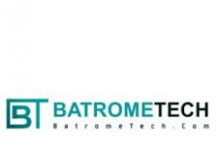Table of Contents
Language arts lesson plans & Language Arts Strategies
Language arts lesson plans–Teaching English and Language Arts. English and language arts are two of the most primary and widely taught subjects in Nigerian schools,African schools and United States schools. The American National Council of Teachers of English separates English and language arts into five basic categories: reading, writing, speaking, listening and viewing.
Language arts lesson plans is the study and improvement of the arts of language plans. Basically, the primary divisions in language arts including professional planning strategies are literature and language, where language in this case refers to both linguistics, and specific languages.Language Arts is the basic or precise methodology applied for the accurate teaching of language arts, targeting mostly on issues relating children of preschool through middle school age.
Children with ADD/ADHD and other students who are at risk for failure in the classroom are among the students who will benefit the most from current teaching strategies and language arts lesson plans that are taught and recommended throughout the country. These include whole language arts plan and strategies, the writing process, reciprocal teaching, and other higher-level questioning and critical thinking strategies.
There are numerous strategies that teachers can use to best teach an integrated language arts curriculum. The following pages summarize many strategies one can use in teaching literature and writing.
These language arts plans and strategies are excellent for students who have difficulty focusing and maintaining attention because;
- They are high-interest, relevant, and motivating;
- They are multisensory in nature;
- They involve active participation;
- They involve interaction with peers, resulting in greater acceptance, social skill development, and improved self-esteem; and
- They allow for choices, tapping students’ learning styles and strengths
As we experiment with introducing some of the following activities and strategies in our classrooms, all of our students will benefit, particularly those with special needs.
With an integrated language arts approach, it is difficult to focus separately on reading and writing strategies. However, I will be discussing writing problems in more detail in the following chapter.
Pre-reading strategies
Relate stories to prior experience or knowledge by:
- Class discussion
- Brainstorming/charting prior knowledge
- Using visuals/audiovisuals relating to topic of literature (e.g., maps, music, filmstrips)
- Story predictions, charting, graphing predictions
- Setting a purpose
- Previewing the visuals in the text
Graphic organizers and other meaning-making strategies
Graphic organizers are visual depictions of a concept and allow the student to organize visually what they have read. Good readers visualize and form an image while they read; poor readers do not.
- Storyboards: divide sections on a board or piece of paper and have students draw or write story events in sequence in each box/section.
- Story charts/maps: identify characters, setting problem, sequence of events, resolution of conflict.
- Plot profiles: after reading a book, choose a number of events and produce a class graph of which events students found to be the most exciting. Plot on a large graph the majority opinion of the class (by show of hands or applause) how exciting each event was.
- Favourite part graph: (similar to above) class identifies a number of scenes or parts of the book which are plotted on a graph. Everyone records their favourite part on the bar graph.
- Circle stories: for stories that are cyclical, e.g., if you give a mouse a cookies, the Ox-cart man). Write on the chalkboard all the main events whole class decides where they fit on the circle. Then on individual paper plates divided into section, students reproduce the story in sequence (pictures/words) and retell it.
- Wanted posters: students create posters listing identifying characteristics of a character in the book.
- Venn diagrams: use diagrams to compare and contrast two similar pieces of literature, compare a book with its movies version, or to compare characters within a book.
- Character web: put the character’s name in center of the web with traits and descriptions stemming from the center.
- Plot chart: make a chart for stories such as sleeping beauty and the true story of the three little pigs.
- Prediction charts: create charts that are modified as story is being read. Based on the title and illustrations, students make initial predictions. As they read, stop and predict what will happen next. Continue questioning, predicting, and recording. Make clear to students that predictions are best guesses based on the information we know at the time and that good readers are constantly predicting when they are reading.

Other meaning making strategies
- Host seat: a student volunteers to be on the hot seat, representing particular character from the story according to the Language arts lesson plans. Students ask him/her questions that must be answered in the way the character would answer them.
- Quick writes: give students two or three minutes to write anything they can think of about the topic. Students are instructed not to worry about punctuation, spelling, grammar; just write.
- Directed reading/thinking activity (DRTA); guide students in predicting what the story will be about, reading to verify hypothesis, checking their comprehension with peers and teacher, predicting what will occur next, and starting the process over again after a certain amount of passages/pages are read.
- Guide imagery (visualization); develop meaning by creating personal pictures of the text in the mind as sensory descriptions are suggested or read by the teacher, students close their eyes as teacher either reads aloud or tells the setting. Students are guided in creating personal mind picture using their five sense.
- Think -about protocol: pairs of students read aloud and exchange their interpretations and concerns.
- Teacher modelling: the teacher models thinking aloud and summarizing.
- Journal entries: include reflective journals, meta cognitive journals, and double-entry journals
- Reciprocal teaching: use a questioning strategy that teaches students to focus intently on what they are reading by designing and asking questions and summarizing their understanding. Researching has found that good readers spontaneously use strategies of predicting, questioning, clarifying, and summarizing. Poor readers don’t self-monitor or use strategies for asking themselves questions that lead to understanding. In a reciprocal teaching format, students are asked summarizing questions such as: what is this paragraph most about? What would be a good title for this passage? Follow-up with in depth questioning. Who is the most important person in this paragraph? Which details support the main idea, clarifying questions might include: has anyone heard this expression before? What do you think it means.
- Reader’s theatre: work on scripting a piece of literature into dialogue then read I aloud dramatically.
- Retelling: review the literature students have read through story telling summarizing, time lines, quick-writes/quick-draws, tape recordings, plot charts, or any of the graphic organizers
- Teach students the following
- Vocabulary within context
- Point of view
- Writing style, author’s use of language (including figures of speech)
- Reading aloud. Read to the class at all grade levels, modelling fluency, expression, and metacognition.
- Additional tips
- When using ‘big books’, point to the print with a dowel or pointer, frame key words and phrases with your hands.
- Use pocket charts and colored sentence strips to retell the story and discuss vocabulary.
- On wall charts, use ‘stick-em’ papers to cover key words and have students supply the missing words.
Beyond activities and book project
Draw:
- A scene from a book
- A map or diagram of the setting of the story
- A poster advertising the book
- A bookmark with pictures or symbols on one side, and a list of important events or summary on the other
- A comic strip page that highlights important action
Design:
- A picture postcard of the setting. On the back write to a friend as if you were the main character in the book and describe the setting and events happening there.
- A T-shirt for your main character that represents attributes of the character’s personality
- A T- shirt with symbols representing events in the book
Make:
- A diorama of setting
- A literary scrapbook about a character in the book with postcards, pictures, award certificate, report cards, etc.
- A cube on which you draw the key events of the story
- A word and picture collage of the main events
- A board game based upon the book
- A mobile of the plot
- A roll-movie of the book
- A pop-up book, mini-book, accordion book, or big book
- A flannel board story
- A memory basket with items representing events or themes in the story
- Foods mentioned in the book
Pretend:
- You are a TV interviewer, audio-or videotape an interview with a character in the book.
- You are prosecuting attorney, put one of the characters in the book on trial for a crime, prepare your case, giving all your arguments and support them with facts.
- You are a movie director, cast your book with movie stars, explain why you selected a particular actor for a role from the book.
- You are a news reporter on a particular scene (you are there program)
Write:
- A letter to a friend telling her/him about the most exciting parts of the book.
- A letter to the main character suggesting what might have happened if he/she acted in another way.
- A soap opera using the characters from the book
- A ‘dear abby’ letter from the point of view of one of the characters in the story, and a solution letter
- A new ending or sequel
- Poems about your character/story
- A TV commercial advertising your book
- A daily entry by the main character describing a major event in the story
- Some riddles about the story
- A scene from the story in a different time, past or future
- A moral for the story and relate it to your own life
- A short report on a topic related to the story
- A travel diary describing the places you have travelled in the story
- A promotion campaign for a movies about the book
- A letter to the author
- An event in the story from a different point of view
Find:
- Figures of speech (metaphor, simile, personification, etc) in the book.
Create:
- A book jacket
- A crossword puzzle using words and characters from the story
- A dice game that follows development of the plot or events
- An animation of a scene on adding-machine tape
Perform:
- An original song related to the story
- Pantomime scenes from the story
- A phone conversation between two or more characters
- A reader’s theatre scripted from the book
QUESTIONS on Language arts lesson plans & Language Arts Strategies
Instruction: Answer all question in this section-Verbal Reasoning for Primary four Students
Choose the correct spelling from the option.
- (a) nieci (b) neice (c) niece (d) niceice
- (a) hygiene (b) hyiegen (c) hiyegine (d) hyiene
- (a) yolc (c) yolk (c) yock (d) yolok
Choose from the options letters a-d the most suitable spelling to fill in the gaps in the sentence
- The businessman took _____ from his bank (a) a lone (b) a lome (c) alon (d) a loan
- We ____ every morning before leaving the house (a) pray (b) prey (c) parize (d) price
- He was too ___ to stand alone (a) week (b) wick (c) weak (d) wink
Code and decode the following
Example: if smile is coded as locmb, how is lime code
- Water is coded as PEMIU, how is ATE coded (a) PEU (b) EMI (c) uim (d) PEM
- If the word management is written as 1343, 617485, then manage is written as ___ (a) 134361 (b) 134648 (c) 133851 (c) 137851
- If 15679 is the code for YEAST, what is 7569? (a) year (b) seat (c) steal (d) yeats
Use the example below to answer the below question
Example: retaw-water
- Noitareneg (a) generator (b) general (c) notation (d) generation
- Ssendas _____ (a) sadness (b) sadess (c) senses (d) sandals
- Noisiv ______ (a) sivion (b) vision (c) noisui (d) nosion
Class: Primary four Subject: English Language Language arts lesson plans
Instruction: Answer all question in this section
The monkey and the dish
Once upon a time, a monkey and a big fish were friends. One day the other fishes in the river asked the big fish to bring the heart of his friend, so that they can make him a chief. So he went to his friend the monkey and asked him to come to the river. The monkey sat at the back of the big fish and they swam to the bottom of the river.
When they were in the river, the big fish told the monkey what other fishes had said. The monkey was afraid but he quickly said, “we monkeys don’t carry our hearts with us; we always keep them on top of the coconut trees, if you take me home I will get it for you”.
The big fish and the monkey swam up again and the monkey ran to the top of the coconut tree. That is why monkeys like to climb a coconut tree.
Questions
- Who was a friend to the big fish? (a) tortoise (b) monkey (c) crab (d) frog
- What did the fishes asked the big fish to bring (a) heat of his friend (b) lungs of his friend (c) head of his friend (d) hand of his friend
- How did the monkey got to the bottom of the river (a) the monkey jumped into the river (b) the monkey ran to the river (c) the monkey sat on the back of the big fish (d) the monkey sat on the head of the big fish
- The other fishes promise to make the big fish what (a) a man (b) a boy (c) a teacher (d) a chief
- The monkey likes to climb which type of tree (a) mango (b) coconut tree (c) orange tree (d) apple
Section B: lexis and structure
Fill in the blanks with the correct words given in the brackets
- My father went to town ____ bough a television set (because, but and )
- Here comes the girl ____ stole my pencil (whose, who, whom)
- The students stood up ____ the headmaster entered the room (so, when, and)
Choose the correct answer from the option below and keep in mind standard language arts lesson plans and language strategy
- Get your ingredient ready ______ you start cooking (a) finally (b) after (c) as a result (d) before
- Switch on the computer _____ you start to type (a) as a result (b) more over (c) after (d) before
- ____ of the accident, he is paralyzed (a) besides (b) so (c) as a result (d) then
- ___ did she visit Makurdi (a) whose (b) when (c) where (d) how
- She sings sweetly _____ she (a) hasn’t (b) does (c) doesn’t (d) is
- The children are staying at home why ____ the children staying at home (a) is (b) are (c) has (d) did
Section C: theory Answer all questions-Language arts lesson plans
- What is a simple present tense
(b) fill in the blank with the simple present form of the verbs in the bracket. (i) my mother _____ fish from the fish mongers every morning (buy) (ii) their maid _____ up at 5:00 am every morning (wake)
- List all the ‘wh’ questions (b) use two out of them to make a sentence
- Change the following negative sentence into positive sentences
- He is not a hard-working boy
- This papaya is not sweet
- The boy did not play football yesterday
- The children have not eaten the cake yet
- I have not given the old clothes to the poor lady
- Use these letters to complete the spellings below (n, a, I, m, d)
- Natur___l
- Head ___aster
- Format___on
- Confirmation____
- __angerous
In conclusion,it is highly imperative that every parents should enhance their child’s communication skills with a strong online language arts lesson plans and language strategy together with standard curriculum that doesn’t break the bank.




